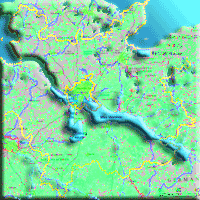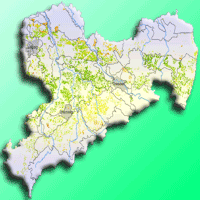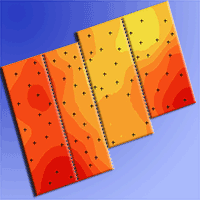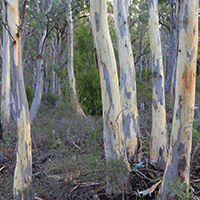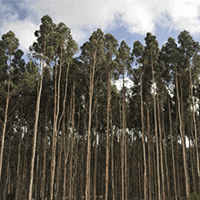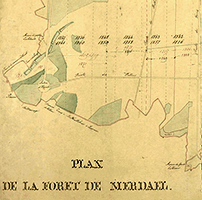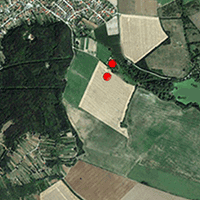
Vascular plants diversity in short rotation coppices: a reliable source of ecosystem services or farmland dead loss?
Alexander Fehér (1) , Lýdia Končeková (1), Daniela Halmová (1), Piotr Prus (2), Zita Izakovičová (3), Marian Dragoi (4)
iForest - Biogeosciences and Forestry, Volume 13, Issue 4, Pages 345-350 (2020)
doi: https://doi.org/10.3832/ifor3055-013
Published: Aug 17, 2020 - Copyright © 2020 SISEF
Research Articles
Abstract
Short rotation coppices (SRCs) are a relatively new type of crop stand that is usually established on agricultural land in intensively used landscapes. However, SRCs also offer services other than the production of renewable energy. We evaluated the more complex significance of SRCs by including the other important potential ecosystem services of these stands. The objective of this paper was to evaluate the ecosystem services and disservices of SRCs by inductive (bottom-up) methods moving from the species-level to the ecosystem services on the basis of the spontaneous vascular plants diversity in SRCs. We also compared the plant-diversity-based potential ecosystem services and disservices of field SRCs, crops and forests in the same landscape in southwestern Slovakia. It was found that SRCs had an intermediate vascular plants species composition between those of forest ecosystems and agroecosystems. Among the ten evaluated ecosystem services and disservices, considering the sum of the positive and negative evaluations, SRCs had an intermediate position between the forests and arable-land vegetation. When comparing the ecosystem services of the SRCs with those of the forest ecosystems and agroecosystems, the SRCs achieved the best rating for species richness, remediation and collectables. SRCs had the worst rating for providing pasture and had the highest proportion of toxic and allergenic plants. Interestingly, SRCs achieved positive values in ecosystem services and mainly recorded the worst values in the ecosystem disservices. The direct utilization of these services and the economic balance of ecosystem services and disservices require further study.
Keywords
Bioenergy, Ecosystem Service, Farmland, Forest Ecosystem, Short Rotation Coppice
Authors’ Info
Authors’ address
Lýdia Končeková 0000-0001-9032-3118
Daniela Halmová 0000-0001-5172-0997
Slovak University of Agriculture in Nitra, Mariánska 10, SK-949 01 Nitra (Slovakia)
UTP University of Science and Technology in Bydgoszcz, ul. Ks. Kordeckiego 20, PL-85-225 Bydgoszcz (Poland)
Institute of Landscape Ecology, Slovak Academy of Sciences, Stefanikova 3, P.O.Box 254, SK-814 99 Bratislava (Slovakia)
Corresponding author
Paper Info
Citation
Fehér A, Končeková L, Halmová D, Prus P, Izakovičová Z, Dragoi M (2020). Vascular plants diversity in short rotation coppices: a reliable source of ecosystem services or farmland dead loss?. iForest 13: 345-350. - doi: 10.3832/ifor3055-013
Academic Editor
Gianfranco Minotta
Paper history
Received: Feb 01, 2019
Accepted: Jun 10, 2020
First online: Aug 17, 2020
Publication Date: Aug 31, 2020
Publication Time: 2.27 months
Copyright Information
© SISEF - The Italian Society of Silviculture and Forest Ecology 2020
Open Access
This article is distributed under the terms of the Creative Commons Attribution-Non Commercial 4.0 International (https://creativecommons.org/licenses/by-nc/4.0/), which permits unrestricted use, distribution, and reproduction in any medium, provided you give appropriate credit to the original author(s) and the source, provide a link to the Creative Commons license, and indicate if changes were made.
Web Metrics
Breakdown by View Type
Article Usage
Total Article Views: 38640
(from publication date up to now)
Breakdown by View Type
HTML Page Views: 31682
Abstract Page Views: 2462
PDF Downloads: 3823
Citation/Reference Downloads: 0
XML Downloads: 673
Web Metrics
Days since publication: 1967
Overall contacts: 38640
Avg. contacts per week: 137.51
Citation Metrics
Article Citations
Article citations are based on data periodically collected from the Clarivate Web of Science web site
(last update: Mar 2025)
Total number of cites (since 2020): 2
Average cites per year: 0.33
Publication Metrics
by Dimensions ©
Articles citing this article
List of the papers citing this article based on CrossRef Cited-by.
References
Characteristics and mode of origin of weeds. In: “The Genetics of Colonizing Species“ (Baker HG, Stebbins GL eds). Academic Press, New York, USA, pp. 147-172.
Gscholar
Response of farmland biodiversity to the introduction of bioenergy crops: effects of local factors and surrounding landscape context. Global Change Biology Bioenergy 6: 275-289.
CrossRef | Gscholar
Pflanzensoziologie. Grundzüge der Vegetationskunde [Plant sociology. Basics of vegetation science]. Springer Verlag, Wien-New York, pp. 865. [in German]
Gscholar
Ecosystem properties and principles of living systems as foundation for sustainable agriculture - critical reviews of environmental assessment tools, key findings and questions from a course process. Ekologiskt Lantbruk 32, Swedish University of Agriculture Science, Centre for Sustainable Agriculture, Uppsala, Sweden, pp. 80.
Gscholar
Spontaneous associated plants in short rotation coppice: challenge for invaders. In: Proceedings of the “7th European Conference on Biological Invasions“ [GEIB Grupo Especialista en Invasiones Biologicas eds]. Pontevedra (Spain) 12-14 Sept 2012. Grupo Especialista en Invasiones Biologicas, Leon, Spain, pp. 330.
Gscholar
Evaluation of biodiversity of ground flora in short rotation coppice: positive and negative externalities. In: Proceedings of the “22nd European Biomass Conference and Exhibition“ (Hoffmann C, Baxter D, Maniatis K, Grassi A, Helm P eds). Hamburg (Germany) 23-26 June 2014. ETA - Florence Renewable Energies, Florence, Italy, pp. 342-345.
Gscholar
Ekologické a socioekonomické hodnotenie vegetácie [Ecological and social-economic evaluation of vegetation]. Príroda, Bratislava, Slovak Republic, pp. 200. [in Slovakian]
Gscholar
Assessing environmental impacts of short rotation coppice (SRC) expansion: model definition and preliminary models. Bioenergy Research 5: 621-635.
CrossRef | Gscholar
Biológia burín [Weed biology]. SPU, Nitra, Slovak Republic, pp. 221. [in Slovakian]
Gscholar
Energy crop production - a complex problem for assessing ES. In: “Ecosystem Services - Concept, Methods and Case Studies “ (Grunewald K, Bastian O eds). Springer-Verlag, Berlin, Heidelberg, pp. 112-118.
Gscholar
Climate change scientific assessment and policy analysis. Biomass assessment. Assessment of global biomass potentials and their links to food, water, biodiversity, energy demand and economy, Main report. Netherlands Environmental Assessment Agency MNP, Bilthoven, Netherlands, pp. 108.
Online | Gscholar
Is energy cropping in Europe compatible with biodiversity? Opportunities and threats to biodiversity from land-based production of biomass for bioenergy purposes. Biomass and Bioenergy 55: 73-86.
CrossRef | Gscholar
TEEB - the economics of ecosystems and biodiversity: guidance manual for TEEB country studies. Version 1.0. UN - United Nations Environment Programme, Geneva, Switzerland, pp. 92.
Online | Gscholar

